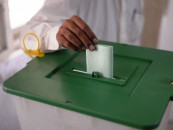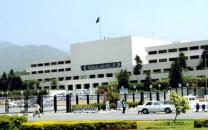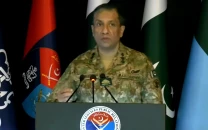The pricing of water
Abiyana does not cover O & M costs of irrigation system, let alone of repair, maintenance, development.

The pricing of water
Recently, the Planning Commission of Pakistan published a report, Canal Water Pricing for Irrigation in Pakistan: Assessment, Issues and Options, pointing out, in no uncertain terms, that we are simple not paying the cost of the water we use for agriculture.
But first, some context: Pakistan’s per capita water resource stands near 1,200 cubic meters per person per year. This figure is down from 5,000m3/person/year and is expected to fall below 1,000m3/person/year soon, making Pakistan a ‘water stressed country’. This decrease in per capita resource has little to do with the depletion of the absolute amount of water and more to do with our surging population rate. Approximately 90 per cent of our water resource is used in agriculture, which employs approximately half of the adult workforce.
The price farmers pay for water, the abiyana, fluctuates between Rs85 per cropped acre in Punjab to Rs250 per acre for non-food crops in Khyber-Pakhtunkhwa. These rates, and the rate of collection of abiyana by provincial irrigation departments, do not cover the operation and maintenance (O&M) costs of the irrigation system, let alone costs of repair, maintenance and development. In no way is the current pricing system sustainable. That said, there has been an interesting appeal by the Chairman of Agriforum Pakistan, who says water recovery rates can be improved if abiyana collections were to taken from lumberdars and patwaris and handed to banks, much the same way we pay for our other utilities. This alone may not solve all our problems, but can be a step in the right direction.
The Planning Commission report and its recommendation to reform water pricing should be a wake-up call to provincial lawmakers. But, given that water pricing is a provincial subject and the Planning Commission is located in Islamabad, like East and West, ‘never the twain shall meet’.
The situation doesn’t get much better in our cities. The 2007 report of the Pakistan Council of Research in Water Resources revealed that every major city in Pakistan had some contaminated drinking water, and that none of the samples taken in Bahawalpur, Kasur, Multan, Lahore and Sheikhupura were fit for drinking purposes. No wonder then that impure drinking water is the number one killer of Pakistanis today, with nearly half of our hospitals occupied by patients suffering from water-related disease.
Last year, the Lahore High Court took suo-motu notice of reports of arsenic in the drinking water of Lahore. The case was disposed of after the Water and Sanitation Agency (WASA) agreed to install filtration plants to tackle the problem. Traces of arsenic can be found in air, soil, water and food but the amount of arsenic in groundwater is known to increase because of human activity. A recent report by WASA, detailing the levels of arsenic in the drinking water of this city of 10 million, has not been made public. One can only speculate at its findings, especially since it is now the fundamental right of every citizen to be aware of this information, but holding hope that the situation has improved would be unrealistic.
An over-pumped aquifer is not the only one of Lahore’s water concerns. With reports that water is now pumped from depths of up to 800 feet, the cost of providing water is increasing, especially when diesel generators are used during frequent loadshedding. Lahore’s WASA, like the other water institutions in this country, scarcely recover their O&M costs from their government-prescribed water rates. It is an organisation in financial crisis and, unless water pricing is taken seriously by the provincial government, will fall prey to the same problems as beset our energy sector.
The chief minister of Punjab has already declared that loadshedding is a form of terrorism. It is not, and he is reminded of the nine policemen murdered in Ichra — an act of terrorism, if ever there was one — the same week he repeated this pronouncement. Soon, however, there may be no place for his provincial government to hide from his own rhetoric.
Published in The Express Tribune, August 9th, 2012.



















COMMENTS
Comments are moderated and generally will be posted if they are on-topic and not abusive.
For more information, please see our Comments FAQ